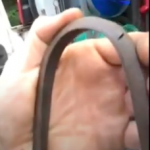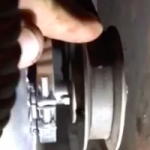Furnace Belt Maintenance
Performing regular maintenance on your furnace belt will keep your HVAC system running smoothly (and quietly), improving the life of your furnace and preventing costly repairs. The furnace belt is an essential part of your heating system and can deteriorate over time due to use and environmental issues like dry rot. Be sure to check the belt regularly to keep your home heated efficiently.
As fall sets in and it’s time to turn the heat on, it’s a good idea to give your furnace belt a check and see if it’s time for a replacement or a realignment. Read on to learn how to diagnose common furnace belt problems and be sure to check out the video above with Handyman Shane!
How to check your furnace belt.
What you’ll need
- Flashlight
- Wrench
- Replacement belt
Step 1: Inspect the belt. Watch it run and listen for squeaking — a sign of a loose fan belt. Check the alignment to make sure it is running smoothly along its track. Furnace belts will wear quickly if it is misaligned or is under improper tension. Even if everything looks to be moving smoothly, it is a good idea to remove the belt and inspect it carefully.
Step 2: Turn off power to the furnace. There will usually be a power switch near the furnace chamber – otherwise be sure to flip the breaker.
Step 3: Remove the belt by loosening the bolts with your wrench enough to release the tension. Pull the belt off the pulley wheel and motor pulley. Be sure to inspect for debris around the housing.

Step 4: Inspect the belt. Look for a hardened appearance, frays, wear and dry rot. Are pieces missing? Are there cracks or tears? Over time regular wear will degrade the belt, even under normal usage. Additionally, environmental factors like high humidity can cause cracks and rot in the belt. As you inspect, be careful to not twist or crimp the belt.
Step 5: Replace the belt on the system. Place the belt on the pulleys, motor side first, and then tighten the screws. Check the alignment – when the belt is improperly aligned, heat damage can occur from friction.

Step 6: Check the tension. An overly-tightened belt will affect the amp usage of the motor, stressing the bearings and shortening the life of the system. A loose belt will slip and affect the efficiency of the motor. Check the tension by applying light, even pressure with your fingers; a properly tensioned belt will have around a half an inch of give. To adjust the pulleys, tighten or loosen the pulley mounting bolts.
Keith Specialty Store is a proud supporter of home pros, DIYers and professionals. We want to help you make your home and projects the best they can be. Check out more from our home maintenance series and be sure to contact us with any questions!

